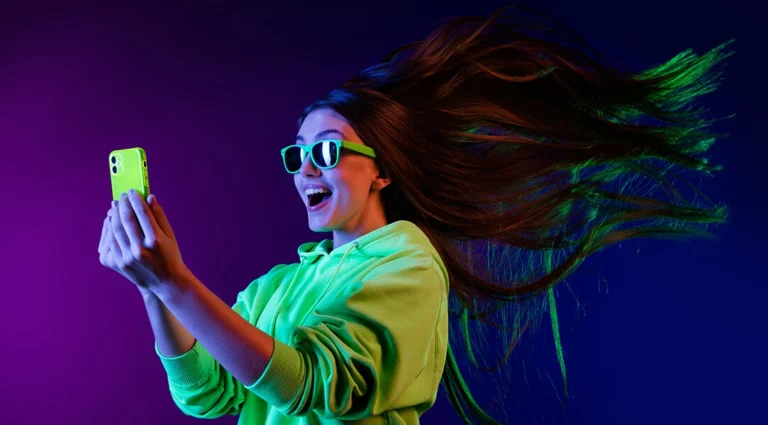Personalisation ranks among the top strategies for delivering a stellar customer experience. By using relevant customer data, brands can create a truly unique customer experience, making customers feel valued and increasing consumer trust.
Done right, personalisation has the potential to improve retention and conversions. And this can happen through a range of digital channels, be it video, emails, landing pages, MMS or anywhere else on the connected web.
The Right Way to Do Personalisation
Before we talk about the wrong way to do personalisation, let’s focus on what you should do. Personalisation is more than just calling your customers by their name. To be effective, it needs to feel human and organic, less like the person is interacting with a brand and more like they’re interacting with another person.
Consistent Personalisation Across Channels
One important facet of personalisation is consistency.
Post on
Whether your customer is connecting via an app, email or your website, they’re expecting the same experience.
This expectation is especially marked with Gen Z. A recent study showed that 66% of Zoomers believe websites will talk to each other to create an integrated personalised experience for users.
The Right Format for Personalisation
Just as the right platform is important, so is the right medium. You can personalise text, certainly, but nothing recreates that “human” touch quite like video. Salesloft, for example, reported that they recorded a 75% close rate when they used personalised videos.
If personalising videos for each customer sounds like a lot of work, it would be — if you had to do it one by one. In the Salesloft example mentioned above, it was a small batch, something you can handle in-house or with an agency. But if you want to reach hundreds of thousands or millions of customers, you’re going to need some help from modern technology. With a Personalised Video platform, you can leverage automation tools to personalise at scale.
Taking both these tips into account — a multi-channel approach and the right format with data-driven video — brands have seen some amazing results:
- 8x higher conversion rates
- 68% increase in sales
- 5x more social sharing
- 25% uplift in retention
Yet as great as personalisation is, you’d be surprised that a lot of brands still aren’t taking advantage of it. Of those who are using it, there are still common personalisation mistakes and pitfalls many brands deal with.
In this post, we’ll look at a few examples of brands that got personalisation wrong. Hopefully, you’ll catch a few tips on how to raise the bar in your own practice.
Mistake #1: Messing Up the Placeholder
Offender: Jack In a Box
Lol thanks for the sweet personalized email jack in the box #Fname pic.twitter.com/H2bgmWBJnN
— Jen (@Jenleahhhh) January 25, 2018
This mistake is common in email marketing. It happens when an autoresponder sends out an email with a raw code or placeholder instead of the subscriber’s name. So instead of receiving an email with “Hi John,” for instance, what you get is “Hi {{firstname}}” or the infamous “Fname.”
It happens all too often, and it’s not an endearing stumble for a brand to make. The problem with this kind of error in particular is that it gives your subscribers the impression that someone somewhere in your organisation is incompetent. And when you’re trying to get people to trust you with their money, that can be an issue. Maybe it’s less of an issue for a fast-food restaurant, like Jack in the Box, as shown above. (After all, you are getting free tacos.) But it could be a bigger deal for, say, a bank.
So here’s what you should do to prevent this from happening.
Test and Test Again
We do this with all our Personalised Videos. QA is an essential part of digital communications. If it’s an email, send a test email to yourself or your team before blasting it to your list. This way, you can see personalisation errors before they reach your customers — and the Twitterverse.
Use a Fallback Phrase
This is a phrase that allows you to address your subscribers with a generic term that fits your brand voice. You’ll need the placeholder term when you don’t have a first name available. Here are some examples:
- Hello, friend (for a casual tone)
- Hi Adventurer! (for a travel company)
- Hey there, Fashionista (for a women’s clothing brand)
- Hi Insider (for a loyalty club or membership site)
See one example in the video below.
Mistake #2: Sending the Wrong Message
Offender: Amazon
Delivering irrelevant messages to people is a quick way to damage your brand reputation. Sending focused emails based on automation-gone-wrong is the worst. Everybody knows personalisation is a thing, but when it goes wrong, it’s jarring. At best, it’s funny. At worst, it’s hurtful or offensive.
Twitter is full of examples of people talking about weird personalisation gone wrong, like the time Amazon sent baby registry emails to infertile women.
Unless they’ve signed up to receive specific content, don’t assume that everyone on your list has the same needs. Instead, create segments within your list and label them properly so you don’t get things mixed up. Also, you should be careful when you’re dealing with sensitive topics. Personal topics like health, finances and family need extra care. A negative trigger will hurt rather than help the brand-customer relationship.
Mistake #3: Targeting the Wrong Segment
Offender: So, so many brands
Targeting the wrong demographic means sending completely irrelevant messages to people who don’t need them.
- A bakery sale for someone with gluten intolerance
- Pregnancy products for single men
- A new winter clothing line for customers in Hawaii
- Customer satisfaction surveys to brand new clients
The whole point of personalisation is to get the right message in front of the right audience. When you target the wrong segment of customers, you’re wasting the chance to add value to your customers.
Important note: Segmentation isn’t personalisation. True personalisation is 1:1 communications, but you might combine segmentation and personalisation to deliver a tailored experience. For example, you could send a message with your customer’s first name and other individual data, like their contract renewal date, but include cross-selling options relevant for their segment, such as a new customer versus a long-term customer.
The best way to avoid targeting people wrongly is by understanding your audience. Know what they want by studying their behavior and how they interact with your brand. You can achieve this by using surveys and questionnaires and tracking specific actions taken (or not taken) in your campaigns.
Mistake #4: Going Overboard With Personalisation
Offender: Spotify, Netflix and others
While getting a personalised experience with a brand can be pleasant and welcoming, taking customer data lightly can be jarring or even offensive. There’s a way to do personalisation without being creepy.
Brands collect reams of data about us as consumers. We know that, and we’re often OK with it. For example, Spotify tracks everything we listen to and helps us out by suggesting new music and creating custom playlists based on what we like.
Being aware that Spotify knows what you’re listening to is one thing, but explicitly seeing how they link song choice to mood (and using it for profit) is another thing. Check out the Understanding People Through Music: Millennial Edition, which talks about using mood and music to optimise targeted advertising.
Sometimes overstepping with personalisation just means sharing personal data, even if anonymised, as seen in this tweet from Netflix.
To the 53 people who've watched A Christmas Prince every day for the past 18 days: Who hurt you?
— Netflix (@netflix) December 11, 2017
To avoid over-personalising, a good general guideline is this: If you’re taking first-party data beyond just you and the consumer, you stand a good chance of alienating that customer. Transparency around what you’re collecting the data for is a great way to gain and retain trust.
Sometimes this is a lot to put in a disclaimer, so you might link to a privacy policy with more info. That’s what we do for our blog subscribers.
Getting Personalisation Right
Now that you’ve seen some examples of brands that didn’t get it right, are you ready to do better? We help brands communicate 1:1 with their customers using data-driven video for everything from bill explainers to upselling and CX.
Contact us today to book a 15-minute call, and we’ll show you how effective personalisation can be when it’s done right.



